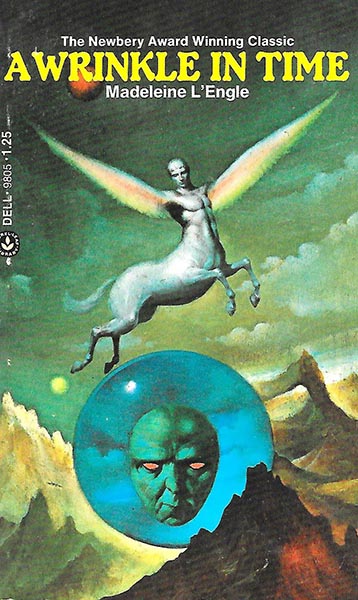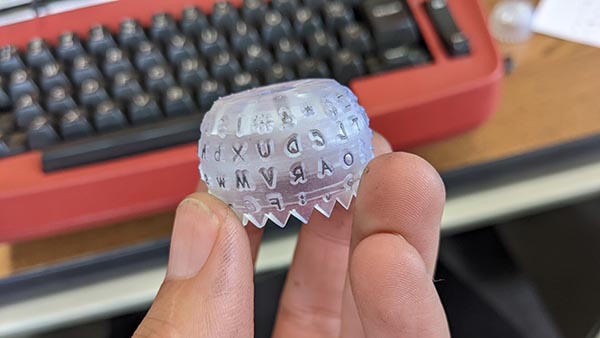Reboxing
A Core77 Design Awards Editor's Choice Finalist reimagines cardboard-based packaging to try to help solve the problem of cardboard waste. Filip Harding is a researcher at the University of Arts London who created a product concept called [rebox.eco].
Research shows that though cardboard is a eco-friendly material if reused, a large portion of it around the world is exported rather than recycled. His solution to the problem? To create a new box design that allows consumers to create sturdy new boxes out of old ones, overall minimizing resource extraction and waste.
He crunched some figures and estimated the potential impact:
“conservative estimates suggest the holistic saving across 10,000 [rebox.eco] boxes would equate to 5 trees, 500 Kg of Co2e, 21,000 litres of water and 4,000 Kilowatt Hours of energy.”
Basically, his design enables easy conversion of large, used corrugated boxes into smaller e-commerce boxes. The emphasis is trying to alter consumer behavior.
As Harding mentions in their Core77 Design Award-winning entry, "Research shows that when the circularity of a product is accentuated and not hidden, the benefit is amplified and consumers can understand the simplicity of reuse through overt communication. [rebox.eco] wants to advocate for this consumer phenomenon through the brands that are sending parcels, allowing them to be proud and support such sustainable initiatives."

You can read more about it here.
Publish and Perish
Many magazines—be they in print or electronic in some way—walk a tight financial tightrope and cling to any service or program that helps them gain subscribers. One of those was Amazon’s Kindle Periodicals program, which kept many periodicals alive. Yes, we used past tense, because Amazon has ended the Periodicals program. Via The Verge:
Last March, Amazon stated that it was dropping all of its print and Kindle magazine and newspaper subscriptions — a new policy that went into effect on September 4th this year. Since that announcement, independent publishers have been scrambling to figure out how to make up for the loss in income that would ensue when many of their subscribers would suddenly disappear. Subscribers who, according to Neil Clarke of Clarkesworld Magazine, could not be contacted directly and redirected to other subscription methods because “none of us know who these subscribers are.” Because they were subscribing through a third party: Amazon.
… “Everyone has been scrambling to make up the difference in revenue,” Clarke explains. “While the impact will range from publication to publication, the cuts are significant enough to endanger many of them. At present, direct subscriptions, Weightless Books, and Patreon are where many of us are directing former Amazon subscribers to go.”
There is some slight ray of hope.
Some will regain their footing. Many, including Clarkesworld, have been invited to become part of Amazon’s Kindle Unlimited program, where people pay a monthly fee for access to books and “select” magazine subscriptions. Although even those who become part of Kindle Unlimited will not be seeing the same income as they did with straight subscriptions.
As publishers ourselves, we sympathize. So if you have a favorite publication and have a few bucks to spare, why not see how you can help them out.
Sun Up
Like magazines, newspapers are also in a perilous state. But, via Nieman Lab:
The Colorado Sun is going nonprofit. The five-year-old digital news organization, launched by journalists who’d left The Denver Post following round after round of cuts by the paper’s hedge-fund owner, Alden Global Capital, had operated as a rare for-profit exception in the universe of local news startups. Now the Sun is joining its tax-exempt peers.
Journalism, especially local journalism, is vitally important so the new designation makes sense.
The move was not entirely unexpected. The Sun is one of the projects highlighted in a forthcoming book by Ellen Clegg and me, What Works in Community News: Media Startups, News Deserts, and the Future of the Fourth Estate, which will be published by Beacon Press in early 2024. When I interviewed Ryckman in the fall of 2021, he told me that a shift to nonprofit might be in the Sun’s future. The Sun has been operating as a public benefit corporation, or PBC, a legal designation covering for-profit organizations that serve society in some way. Among other things, a PBC is under no fiduciary obligation to enrich its owners and may instead plow revenues back into the enterprise.
If the alternative is no newspaper at all, this seems like the best alternative.
The Sun’s shift to nonprofit status means that there will be one fewer news organization that operates under the hybrid for-profit/nonprofit model. The largest is The Philadelphia Inquirer, a public benefit corporation owned by the nonprofit Lenfest Institute, named after the late billionaire H.F. “Gerry” Lenfest, who briefly owned the paper and gave it away. Donations to Lenfest support reporting projects at the Inquirer as well as other news organizations.
Cover Story
For many children, a popular book was Madeleine L’Engle’s novel A Wrinkle in Time (despite the fact that its opening line is actually “It was a dark and stormy night”). A recent story in the NY Times even identified one specific edition: the 1976 Dell paperback, specifically due to its “nightmare fuel” of a cover:

The cover artist is not credited in or on the book, and podcast host Amory Sivertson went to extraordinary lengths to find out who it was.
Ms. Sivertson thought that finding the artist’s name and giving the person credit were important for a work that is “on people’s bookshelves and in their hearts and in their memories.”
“This is one of the pieces that outlives him,” Ms. Sivertson said of the cover. “It’s just — you have to know. We have to find out who is behind it.”
Sivertson is the co-host and senior producer of “Endless Thread,” a podcast produced by Boston’s NPR station WBUR. S. Elizabeth, writer of the Unquiet Things blog, had first raised the mystery of the cover, which Sivertson picked up on.
Ms. Elizabeth said she had first developed an “idle curiosity” about the artist behind the “Wrinkle in Time” cover art in 2019. In 2021 and 2022, her curiosity increased as she worked on her latest book, “The Art of Fantasy,” a compendium that comes out on Thursday.
In May, she described her search for the artist in a blog post, hoping it would generate new leads. She said that she had contacted people online who were connected to the novel, the fantasy art world and Ms. L’Engle. Ms. Elizabeth reached out to Ms. L’Engle’s granddaughter on the social media platform X to ask if she knew who created the cover, but the account responded with a shrug emoji.
“Endless Thread” occasionally tackles mysteries and took up the search. Sivertson made hundreds of calls, and it became a kind of industry reunion.
Ms. Sivertson said these calls were “an industry coming back together,” with people who worked in publishing and illustration in the 1970s speaking with each other for the first time in decades.
But did she find the elusive artist? Yes.
In late June, she was given the correct name: Richard Bober. Mr. Bober died last year, but Ms. Sivertson was able to speak with his relatives in early July, and she said they found proof that he had made the cover art.
The next mystery? The cover artist of L’Engle’s follow-up series A Wind in the Door.
Having a Ball
How many of you know what this is:

Once upon a time, when IBM Selectric typewriters walked the Earth, they used metal typeballs rather than hammers. The advantage to this was that you could relatively easily change the font by swapping out typeballs. Needless to say, no one makes typeballs for the Selectric anymore.
Now, via Boing Boing, if you have an IBM Selectric and you still want to use it, Sam Ettinger has come up with a way of 3D printing typeballs such that they print clear, crisp letterforms and are durable enough to use in a typewriter.
The blank typeball is based on 1944GPW's typeball on Thingiverse, which is released under a Creative Commons-Attribution license. I suspect that my project wouldn't exist if it weren't for this one. I had to change most of their typeball dimensions, and there are major issues with the way their characters are generated, but I sure as heck would have made those same errors myself, so I'm infinitely grateful for the people before me who documented their processes!
Another project that deserves a lot of credit is The Sincerity Machine by Jesse England. Jesse is a delight and a constant source of creative inspiration for me, and it brings me great joy to watch this project evolve with him.

On the Roadline
There are many graphics in our life that we take for granted without ever really appreciating them. Signs are like that—unless you’re in the sign business you really don’t think about signs beyond what they say. The same could be said for roadlining, so taken for granted that we hadn’t even known it had a name. Roadlining is the process of adding street markings to (usually) direct traffic—or try to. Print magazine asks:
Have you ever really thought about roadlining? Have you ever wondered how the all-important markings on our streets even got there in the first place? This is an art form that’s hidden in plain sight, with master craftspeople responsible for the painting of lines, words, and symbols on our streets.
There is a short documentary that pays tribute to roadlining.
“Something that every single person is basically going to use is a road,” Lilley says in the short. “There’s a lot of pride involved in it as well; doing something that everybody’s going to use.” Lilley has been a roadliner in Glasgow for roughly 25 years, since he was 16. “I’ve never used tape. Never ever. Always just done it freehand,” he says with pride. “There’s no room for error. We can’t go back and just bin it or start again. It’s gotta be done first time right or not at all.”
For more on the art of roadlining, check this out:
Banking on Graphene
Was it a good week for graphene news? It’s always a good week for graphene news! A super-powerful graphene-based power bank. From (who else?) Graphene-Info Indiegogo:
Continental Drift
Planning a vacation? Why not try the continent of Lemuria. Well, sure, it doesn’t actually exist, but there are worse places to visit.
It’s part of a phenomenon that started innocently enough.
Philip Sclater was a 19th-century zoologist. He had developed a model of worldwide species distribution and, by gum, he was going to make the entire world fit into it. In 1858, he published a paper in the Proceedings of the Linnean Society in which he divided the world into six biogeographical realms, called the Palaearctic, Aethiopian, Indian, Australasian, Nearctic, and Neotropical (there will be a quiz). All the world’s animal species neatly fit into those divisions. Except one. He had found lemur fossils in both Madagascar and India—two separate realms. What to do? Well, via Big Think, in 1864, he devised a solution.
He proposed a vast land bridge that had once linked Madagascar to India. And he gave that hypothetical continent, now swallowed by the Indian Ocean, an appropriate name: Lemuria.
Now, that’s not an unusual solution to this kind of conundrum, and like other hypothetical solutions, it was disproven as better evidence was discovered. And it could (and should) have ended there. But Lemuria soon took on a life of its own.
Two-thirds into the 19th century, there were very few real places left to discover. The sudden addition of an entire continent to the map — never mind that it was conjectural and drowned — inspired other scientists (and other, less scientific-minded thinkers) to develop theories about Lemuria that went well beyond explaining the whereabouts of a tiny primate.
It wasn’t just crackpots.
In 1870, German biologist Ernst Haeckel suggested that Lemuria could be the ancestral home of humanity, as a way of explaining “missing links” in the fossil record of early humans.
But Lemuria fans did soon jump the shark, if not the lemur. Helena Blavatsky integrated it into her proto-New Age belief system, and others took up the Lemurian cause.
Aided by Charles W. Leadbeater, a theosophist who claimed knowledge of Lemuria via “astral clairvoyance,” William Scott-Elliot elaborated on Blavatsky’s vision of Lemuria and its root races. In The Lost Lemuria (1904), Scott-Elliot placed Lemuria in the Pacific, and described the Lemurians as 15 feet tall, brown-skinned, and flat-faced, with bird-like sideways vision. They could walk backward and forward with similar ease and reproduced with eggs. Interbreeding with animals eventually produced ape-like ancestors to some of the human races.
And they were off to the races. (Atlantis, eat your heart out.) Over the course of the 19th and 20th centuries, many books were written about Lemuria, and it must have been a continent on wheels because it was proposed to exist at various places around the world.
In the American imagination, Lemuria became most closely associated with Mount Shasta in northern California, which according to Frederick Spence Oliver (in his 1894 book A Dweller on Two Planets) and other occultist writers was the last refuge of the survivors of sunken Lemuria, who lived there in a jewel-encrusted underground city called Telos.
And well why not? Others believed that the ancient Lemurians eventually transformed into whales and dolphins—although oddly no one ever proposed that Lemurians had transformed lemurs. Hmm…maybe we can get a book out of that, or at the very least a white paper.
The original reason for inventing Lemuria was rendered moot in the 1960s, when Alfred Wegener’s theory of plate tectonics explained continental drift—which means you don’t need hypothetical land bridges. And researchers studying plate tectonics did indeed find that India and Madagascar had been part of the same continent until about 70 million years ago.
Ah, but that didn’t stop the Lemuria-philes.
Lemuria is not the only ingredient of the otherworldly cocktail that keeps drawing people toward Mount Shasta, but it is by no means the least. Visitors to the area occasionally report seeing seven-foot-tall Lemurians walking the surface in flowing white robes, supposedly on a break from their subterranean existence.
…Lemuria also lives on in Ramona, a small town in Southern California and headquarters of the Lemurian Fellowship. Founded in 1936, the Fellowship is a religious organization that transmits the wisdom revealed to its founder by a group of Masters hailing from Mu (the Pacific version of Lemuria).
And it’s become a way of life.
The Lemurian Philosophy says that if we live by universal laws (including the belief in reincarnation, karma, and the teachings of Christ), we will achieve an advanced stage of civilization. Its guiding principle is balance: spiritually, materially, and mentally. Students who successfully complete first a correspondence course and then advanced training may join the Lemurian Order. The Order supports itself in part by the sale of arts and crafts made by its members.
To be honest, that sounds kind of appealing.
All this because a zoologist needed to fit some errant fossils into a pre-determined theory.
It’s Time to Play…“Egg or Sponge?”
You may or may not have seen or read about the strange gold object that a National Oceanic and Atmospheric Administration (NOAA) expedition team recently found in the Gulf of Mexico.

Image credit: NOAA Ocean Exploration, Seascape Alaska.
It had been found on August 30 in a seamount two miles (3,300 meters) beneath the ocean by a remotely operated vehicle run by NOAA’s Seascape Alaska 5 expedition. And the thing is…scientists have no idea what it is. (We know what you’re going to say: it’s a relic from Lemuria. Could be, could be.) They are certain of one thing: it’s biological.
Candino said they know it is biological because of the way it was attached to the rock, its structure and the way it appears to have protein-like layers throughout. “There are some morphological similarities to the often bizarre organisms we encounter in the deep sea, but so far the answers have eluded scientists worldwide,” he said.
Sides are forming, with some saying it’s an egg, others saying it’s a sponge.
The leading theories are that the gold orb is an egg case of a potentially unknown species, or that it’s a type of sponge. “I’m Team Egg Case at the moment, but I’m excited to find out,” Candino said.
Team Sponge has its fans as well.
Jon Copley, a professor of deep-sea ecology and ocean exploration at the University of Southampton in England who was not involved with the mission, is leaning toward sponge “because of the fibrous texture in the pictures,” he told Live Science via email. “But that’s pure speculation without proper examination.”
So…egg or sponge? Place your bets!
Cat Nab It!
Cat owners may understand this intimately: a vet appointment awaits and you can’t get your cat into the carrier, or at least not without having your flesh shredded. What to do? Well, via Core 77, try the EZ-Nabber, a cat-capturing tool manufactured by Campbell Pet Company.

It’s actually targeted primarily at veterinary staff:
“Have you been searching for a way to safely and humanely remove a fractious cat or small animal from a cage while avoiding injury to yourself and staff? Try our EZ-Nabber! Made in the U.S.A., this durable, washable capture net is perfect for catching the unruly feline or small pet.”
It could be useful for cat owners as well. The EZ-Nabber comes in 14- and 16-in. sizes and costs $145 a pop. Replacement nets are available for $30. Or you could get a dog.
Around the Webs
Halloween is fast approaching (although Christmas decorations are now starting to appear in stores), and as you begin to festoon your yard with all manner of creepy objects, something you might want to skip are fake spider webs. Mental Floss explains:
Artificial spider webs are made out of dense cotton, PVC, or other artificial fibers. The stretchy structures don’t break readily and can be difficult for animals to see at night or in low light conditions; this makes it easy for small creatures to fly or walk into them and become stuck.
Although, to be fair, that is the exact point of a spider web. We continue.
There have been many reports of birds trapped in their fibers, leading to broken limbs and even death. Some birds have even been spotted using the artificial material to make their nests—and though a nest decked out in Halloween décor sounds cute, it can potentially trap or harm their chicks. Bees, chipmunks, and other small animals can also become stuck and injured in the webbing.
They do offer some alternatives—such as only putting them indoors. Or:
Another safe-for-wildlife web decoration option is to make them out of paper. For a really eye-catching fake web, try making your own dramatic DIY light-up web using some simple supplies and string lights, or purchase a pre-made one.
Or you could find a giant mutated spider and have it weave the real thing. Now that would be perfect for Halloween.
Happy Dollydays
And, yes, whilst it is still only mid-September, it’s apparently not too early to start thinking about Christmas, as a recent trip to a big box store proved. Indeed, one needs to plan far in advance apparently. (As we learned last winter when no one at Lowe’s could even conceive of why anyone in upstate New York would ever need to buy a snow blower in February. We continue, teeth grinding like tectonic plates… ) So, via Food & Wine, Duncan Hines has partnered again this year with musical and cultural icon Dolly Parton to offer this year’s Dolly Parton x Duncan Hines Sugar Cookie Kit.
Each kit includes cookie mix, festive green frosting, holiday sprinkles (including very cute snowflake-shaped sprinkles), a keepsake booklet, and a barcode for a holiday video message from Dolly herself. The back of the box also features a recipe for Dolly’s favorite Cinnamon Swirl Cookies. If she can’t actually attend your holiday celebrations, serving up a plate of her go-to cookies is probably the next best thing.

Duncan Hines
Each kit has a suggested retail price of $6.98, and “The new cookie kit will start appearing on supermarket shelves in the weeks leading up to the holiday season.” Which could very well mean “next week.”
We told you there’d be a quiz: Name two of Philip Sclater’s biogeographical regions.
This Week in Printing, Publishing, and Media History
September 11
1789: Alexander Hamilton is appointed the first United States Secretary of the Treasury.
1862: American short story writer O. Henry born (né William Sydney Porter).
1885: English novelist, poet, playwright, and critic D. H. Lawrence born.
1922: The Sun News-Pictorial is founded in Melbourne, Australia.
September 12
1940: Cave paintings are discovered in Lascaux, France.
1959: Bonanza premieres, the first regularly scheduled TV program presented in color. (And full color, not just Lorne Greene.)
1812: American engineer, businessman, and inventor of the rotary printing press Richard March Hoe born.
1891: American publisher Arthur Hays Sulzberger born.
1892: Alfred A. Knopf, Sr., American publisher and founder of Alfred A. Knopf Inc., born.
1952: Canadian drummer Neil Peart born.
September 13
1898: Hannibal Goodwin patents celluloid photographic film.
September 14
1321: Italian writer Dante Alighieri dies (b. 1265).
1814: The poem Defence of Fort McHenry is written by Francis Scott Key. The poem would later be used as the lyrics of The Star-Spangled Banner.
September 15
1835: HMS Beagle, with Charles Darwin aboard, reaches the Galápagos Islands.
1889: American humorist, newspaper columnist, and actor Robert Benchley born.
1890: English crime novelist, short story writer, and playwright Agatha Christie born.
September 16
1880: The Cornell Daily Sun, the U.S.’s oldest, continuously-independent college daily, prints its first issue in Ithaca, N.Y.
1959: The Xerox 914, the first successful photocopier, is introduced in a demonstration on live television from New York City.
1959: The Xerox 914, the first successful photocopier, is introduced in a demonstration on live television from New York City.
2016: American director and playwright Edward Albee dies (b. 1928).
September 17
1787: The United States Constitution is signed in Philadelphia.
1877: English photographer, developer of the Calotype Process Henry Fox Talbot dies (b. 1800).
1920: The National Football League is organized as the American Professional Football Association in Canton, Ohio.















Discussion
Only verified members can comment.